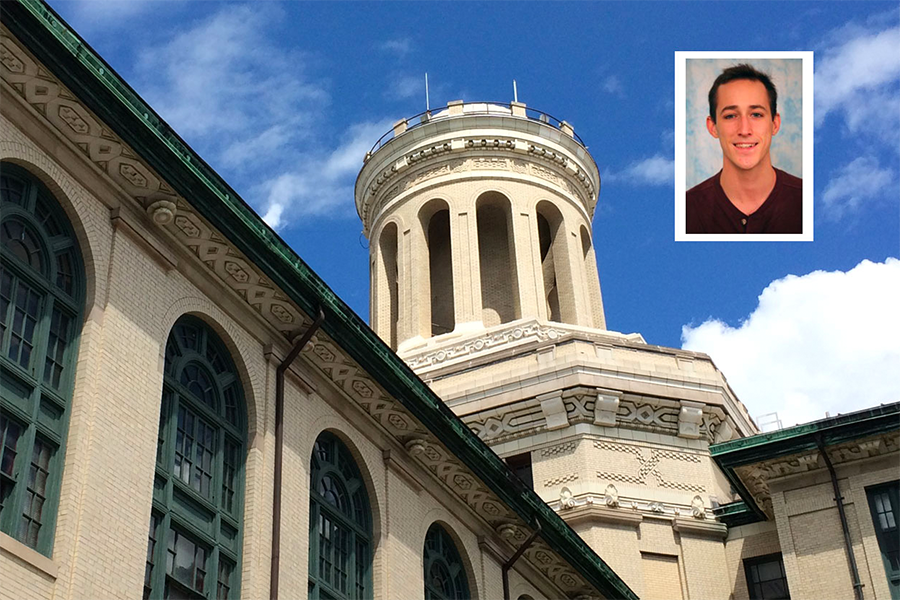
The student and the symposium
By Emily Durham
Standing on stage before hundreds of conference attendees, presenting his research team’s improvement of the standard algorithm in calcium fluorescence neural network reconstruction, you wouldn’t know Carnegie Mellon’s Sean Bittner is still only an undergraduate.
Bittner, an Electrical & Computer Engineering major and a junior at the time, presented a paper at the 2015 International Symposium on Biomedical Imaging (ISBI) titled “Fast algorithm for neural network reconstruction,” which details a neural imaging algorithm he developed with
“My concept of research was simply the pursuit of solutions to scientific problems,” he explains. “I did not understand what defines a good problem, how meaningful particular scientific results are, or how these results are communicated to a wider audience. Being exposed to hundreds of presenters and their individual projects answered many of these questions for me. These simple facts about academic research may sound obvious to a graduate student, but this is completely unfamiliar territory for most undergraduate students.”
Students, especially undergraduates, rarely have the opportunity to present at or even attend conferences, making Bittner’s case a special one. Even when students are offered the chance to attend, the exorbitant out-of-pocket registration fees and travel expenses—which can reach thousands of dollars, depending on the conference—bar them from the experience. But Bittner, who received funding that covered registration, gas, hotel, and food for four days, was relieved from any sort of financial stress, allowing him to fully enjoy the conference.
“In my case, Jelena [who provided Bittner’s funding] could justify using research funds for me to go the conference and publicize our work,” he says. “However, this financial justification would be more difficult for an unsponsored student who did not publish anything at the conference and wanted to go purely for the learning aspect. Since conferences cost hundreds of dollars in registration and travel costs, undergraduate students are very unlikely to sponsor their own attendance and therefore miss out on the experience I was able to have.”
Even if Bittner’s experience hadn’t included presenting his team’s research, he says, the knowledge he gained from the conference would have been well worth his
“Learning in the classroom concerns known engineering principles and practices,” Bittner explains, “where conferences give students a taste of what it’s like to operate in the space of the scientific unknown. It is a way for students to see how what they’ve learned in their classes can be used or extended in new meaningful ways.”
Not to mention the deeply beneficial connections students can make at conferences, networking with future collaborators, graduate advisors, mentors, and unexpected others.
“The most fruitful connection I made was with an exchange student at Columbia from Lausanne, Switzerland, who was volunteering at the conference,” says Bittner. “We became friends, and coincidentally, I went to Switzerland the following summer. She introduced me to graduate students in her lab, and we spent much of the summer hanging out by the lake. While these friendships were formed in a non-academic setting, we will all work in the same field in the future. Meeting just one person at ISBI expanded my network of colleagues tremendously!”